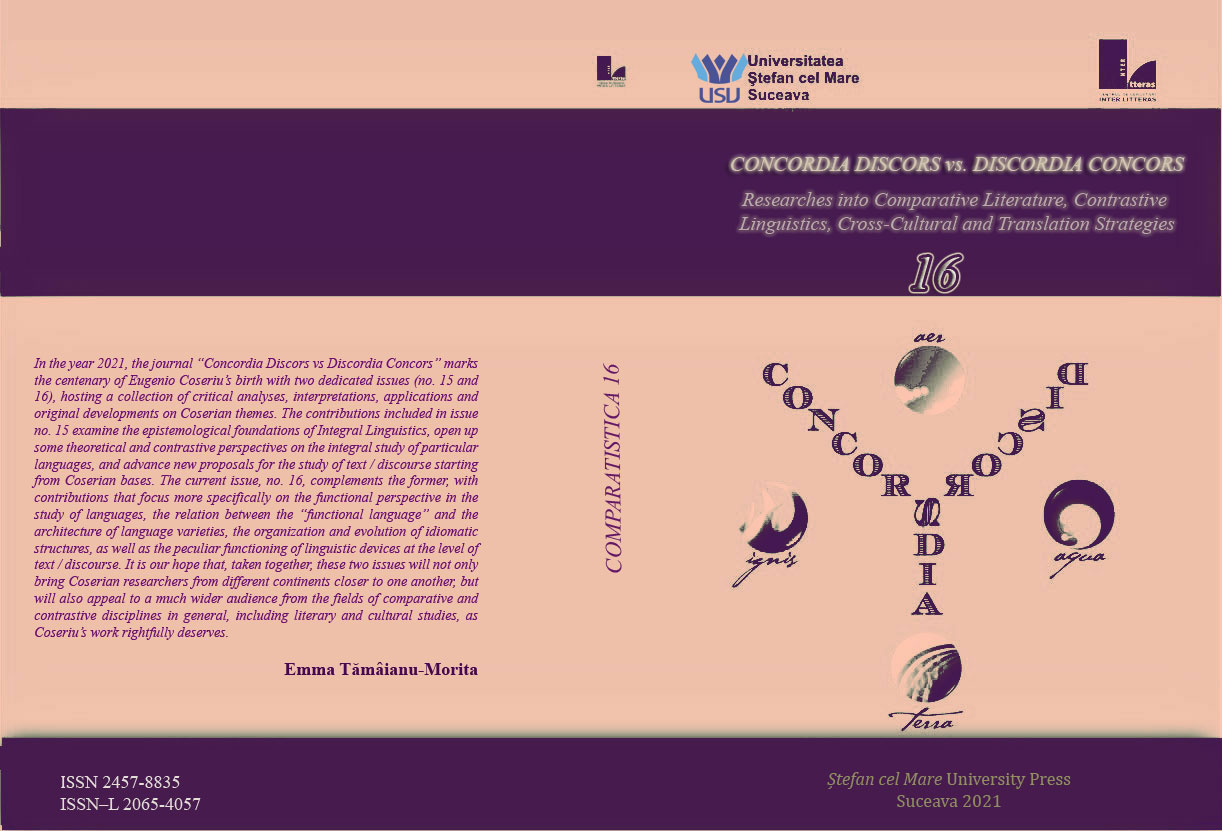Language Variation Theory in Italy: The Coserian Perspective
Language Variation Theory in Italy: The Coserian Perspective
Author(s): Liubov ZholudevaSubject(s): Language studies, Language and Literature Studies, Theoretical Linguistics, Applied Linguistics, Historical Linguistics, Sociolinguistics
Published by: UNIVERSITATEA »ȘTEFAN CEL MARE« SUCEAVA
Keywords: Coserian linguistics; Italian sociolinguistics; Neo-Standard Italian; language variation; diaphasy;
Summary/Abstract: Eugenio Coseriu‘s theory of language variation and change that singles out the main parameters of language variation (diachrony, diatopy, diastraty, diaphasy) has been successfully applied by a number of Italian linguists to describe the restandardization of the Italian language. What is now called ―Neo-Standard Italian‖ is, in fact, the modern variety of Italy‘s standard language that has become more versatile, expressive and widely usable than the traditional Standard Italian due to the development of the lower part of register spectrum (diaphasy axis) and a higher tolerance to variation in diatopy and diastraty. The Italian school of linguistic thought completed the Coserian system of dia- terms by another one, namely, ―diamesia‖, that stands for the distinction between oral and written language. In the Italian historical linguistics, the Coserian theory of language norm and variation allowed to explain the reemergence of certain language features, now considered typical of Neo-Standard Italian, attested in Old Italian texts but later avoided in writing and labelled as substandard. Among other Coserian concepts recurrently discussed and cited by modern Italian linguists one can mention the distinction between primary, secondary and tertiary dialects, the idea to juxtapose functional language and historical language, and the concept of language architecture. Coseriu‘s functional approach to language studies, which views language as integral part of human life and cultural milieu, has resulted fruitful and largely congenial to Italian linguistics that traditionally avoids the extreme structural approaches and favors complex, well backgrounded studies taking into account the historical and sociocultural factors.
- Issue Year: 2021
- Issue No: 16
- Page Range: 86-101
- Page Count: 16
- Language: English

